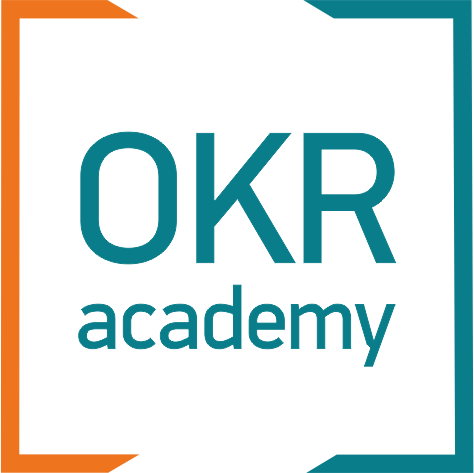Leading and Lagging Outputs and Outcomes in OKR - What to Choose?
In the context of Objective and Key Results (OKR), when forming a set of Key Results, it is recommended to focus on Outcomes (achieved business value) rather than Outputs (efforts invested), and certainly not tasks. However, it's crucial that progress can be measured and tracked weekly, meaning the metrics should be Leading (proactive) rather than Lagging (reactive).
I recently encountered an opinion suggesting a contradiction between Output (the result of activities) and Outcome (the ultimate impact, achieved business value), associating them respectively with Leading and Lagging metrics. It's assumed that Output is a Leading metric, while Outcome is a Lagging one. Essentially, for tracking progress towards an Objective, Leading metrics are more valuable, suggesting that Output metrics might be more beneficial in OKRs.
Is it so? Let's delve into this in more detail.
Is it so? Let's delve into this in more detail.
First, let's define the terms:
- "Output is a measure of the work produced or task completed. It is quantifiable and can be expressed as the number of goods produced or services delivered." - Investopedia
- "Outcome is a high-level condition of success over time that reflects the cumulative effect of outputs delivered by an organization. Outcomes represent the impact of an organization’s work on its external environment." - Harvard Business Review
- "Lagging indicators are metrics that reflect the success or failure of certain business activities after they have occurred. They are typically used for performance evaluation since they provide concrete evidence of whether a business has achieved its strategic objectives." - Smartsheet
- "Leading indicators are pre-emptive metrics that aim to forecast future performance and provide early signs of where a business is headed. They are particularly useful for driving change and preemptive decision-making by indicating future trends before they fully manifest." - Business Performance
- "Outcome is a high-level condition of success over time that reflects the cumulative effect of outputs delivered by an organization. Outcomes represent the impact of an organization’s work on its external environment." - Harvard Business Review
- "Lagging indicators are metrics that reflect the success or failure of certain business activities after they have occurred. They are typically used for performance evaluation since they provide concrete evidence of whether a business has achieved its strategic objectives." - Smartsheet
- "Leading indicators are pre-emptive metrics that aim to forecast future performance and provide early signs of where a business is headed. They are particularly useful for driving change and preemptive decision-making by indicating future trends before they fully manifest." - Business Performance
Although it's often simpler to take Output as Leading indicators and Outcome tends to be Lagging, in reality, these are two orthogonal scales characterizing the metrics taken. And this is not just a theoretical difference. The correct choice of metrics will focus the team on the right activity.

Let's consider these concepts with a specific example related to writing and publishing articles for product and service promotion.
Imagine that in the current quarter, we've decided it's important to focus on promoting our products through publications.
Then our Objective, briefly and emotionally phrased, might be, for instance, "From Words to Wealth!"
Imagine that in the current quarter, we've decided it's important to focus on promoting our products through publications.
Then our Objective, briefly and emotionally phrased, might be, for instance, "From Words to Wealth!"
The business value we're doing this for (i.e., the Outcome) might be: Increase in sales of products or services of the author after publishing a series of articles. This is clearly a Lagging metric because sales might happen after several touches, people read articles at any time, etc. But if we take statistics for sufficiently large final periods - when articles were published and when they were not - and compare the number of sales, then we might see a correlation (or we might not).
So, what could be a Leading indicator while still reflecting the achieved value, not just the result of our efforts? That is, the Outcome as a Leading indicator? It could be the growth in the number of subscribers to the author's channel or an increase in the number of consultation requests after publishing each article, as well as the number of clicks on the link in the article, the number of likes, or the number of views (which we can measure almost in real-time). We're moving along the timeline and trying to find the quickest response, which nevertheless is an indicator of the Outcome - why we're doing it, not the Output - the quantity of our delivery. These indicators help track movement towards the Objective and serve as indicators allowing for timely adjustment of activities.
So, what could be a Leading indicator while still reflecting the achieved value, not just the result of our efforts? That is, the Outcome as a Leading indicator? It could be the growth in the number of subscribers to the author's channel or an increase in the number of consultation requests after publishing each article, as well as the number of clicks on the link in the article, the number of likes, or the number of views (which we can measure almost in real-time). We're moving along the timeline and trying to find the quickest response, which nevertheless is an indicator of the Outcome - why we're doing it, not the Output - the quantity of our delivery. These indicators help track movement towards the Objective and serve as indicators allowing for timely adjustment of activities.
Thus, examples of Key Results for the quarter for the Objective "From Words to Wealth!" might include such Outcomes as:
- Increase product sales from X to Y due to publications. (Lagging)
- Increase the number of subscribers to the channel from X to Y. (Leading)
- Increase the number of consultation requests thanks to invitations in articles from X to Y. (Leading)
- Increase the number of transitions to the product landing page from our publications from X to Y. (Leading)
- Increase reactions to articles from X to Y. (Leading)
- Increase product sales from X to Y due to publications. (Lagging)
- Increase the number of subscribers to the channel from X to Y. (Leading)
- Increase the number of consultation requests thanks to invitations in articles from X to Y. (Leading)
- Increase the number of transitions to the product landing page from our publications from X to Y. (Leading)
- Increase reactions to articles from X to Y. (Leading)
Now, let's consider what our efforts (Output) can lead to these results? The number of published articles is an Output, and we can measure it quite promptly, meaning it's a Leading metric. However, in the case of large projects, like writing a book or a complete series of articles, it might turn into a Lagging metric.
Examples of Key Results:
- Output - Leading: The number of published articles increased from 5 to 30. (we can count how many articles have been added each week)
- Output - Lagging: A book promoting the author's brand has been written. (from our own experience, this can stretch over a year or more)
Examples of Key Results:
- Output - Leading: The number of published articles increased from 5 to 30. (we can count how many articles have been added each week)
- Output - Lagging: A book promoting the author's brand has been written. (from our own experience, this can stretch over a year or more)
Thus, the example demonstrates that the concepts of Leading and Lagging and Output and Outcome are not identical and can have various combinations.
It's, of course, easiest to measure Output promptly because we produce it ourselves, and therefore, it's easy for us to measure the amount of effort we've invested. But what's the danger, and why is it not recommended in OKRs to rely only on Outputs? To clarify, this is not a prohibition, and in fact, in one set of OKRs, consisting of one Objective and 2-5 Key Results, there can be several Key Results of the Output type, but there should also be an Outcome.
The reason is simple. Continuing our example, I could set a super ambitious Key Result like a Leading Output "The number of published articles increased from 5 to 1000".
Then I would focus on the quantity of delivery, not particularly worrying about the quality. What then might happen? Readers, receiving poor quality or incorrect content, will transfer their impression to the company's products, and we get the reverse effect - a drop in sales, unsubscribing from our channel. And yet, we've achieved our Key Result; we're doing great.
(Oops. Maybe someone recognizes the situation in their team right now?).
It's, of course, easiest to measure Output promptly because we produce it ourselves, and therefore, it's easy for us to measure the amount of effort we've invested. But what's the danger, and why is it not recommended in OKRs to rely only on Outputs? To clarify, this is not a prohibition, and in fact, in one set of OKRs, consisting of one Objective and 2-5 Key Results, there can be several Key Results of the Output type, but there should also be an Outcome.
The reason is simple. Continuing our example, I could set a super ambitious Key Result like a Leading Output "The number of published articles increased from 5 to 1000".
Then I would focus on the quantity of delivery, not particularly worrying about the quality. What then might happen? Readers, receiving poor quality or incorrect content, will transfer their impression to the company's products, and we get the reverse effect - a drop in sales, unsubscribing from our channel. And yet, we've achieved our Key Result; we're doing great.
(Oops. Maybe someone recognizes the situation in their team right now?).

Key Results Strength Scale
That's why, where possible, take Leading Outcome as Key Results - what effect do you want to achieve, why are you making an effort. At the same time, it's useful to monitor all metrics on the dashboard - including Output. And then, by the way, you can observe the presence or absence of correlations and possibly, stop those actions that do not lead to the desired result.
